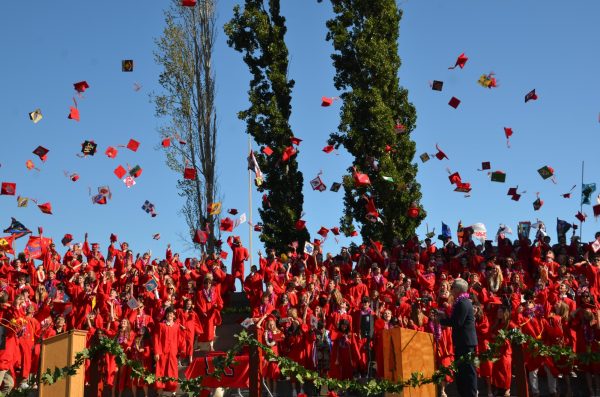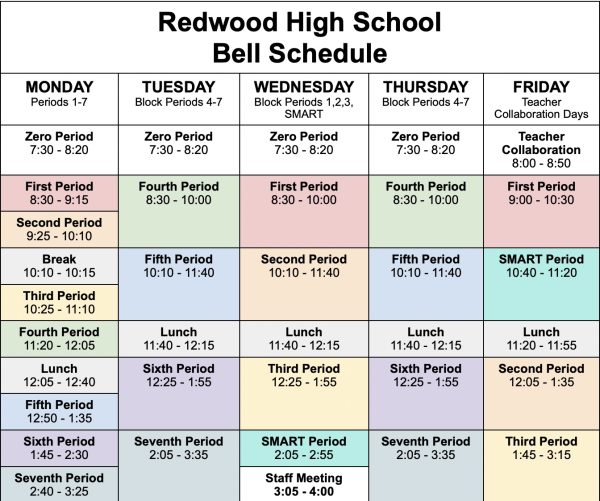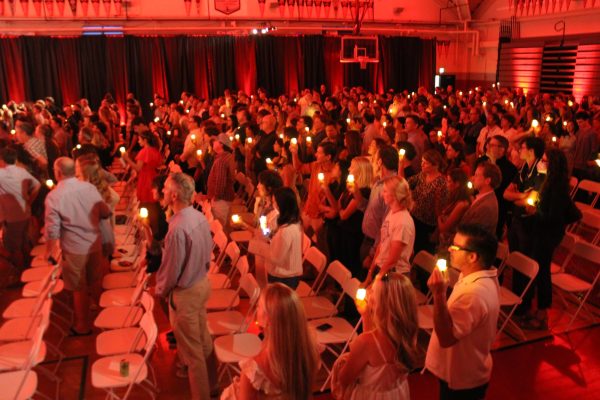Work begins on Richmond-San Rafael Bridge after chunks of concrete fall
March 24, 2019
On the morning of Feb. 7, a car crossing the lower portion of the Richmond-San Rafael Bridge was struck by a falling piece of concrete. Although no one was injured, the car suffered significant damage. Later throughout the day, commuters reported football-sized chunks of concrete falling from the bridge, leading the California Highway Patrol (CHP) to close all lanes in both directions.
The problem was identified as a failed expansion joint, a device designed to relieve stress on buildings and bridges caused by structural movement. In this case, it connects portions of the bridge and ensures stability. Although the bridge underwent a seismic retrofitting that was completed in 2005, 61 joints were left unrepaired. The day of the incident on the bridge, The California Department of Transportation (Caltrans) sent workers to the site and has since decided to replace all the remaining joints.
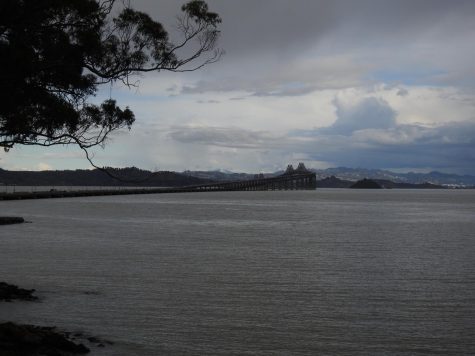
Spanning the San Pablo Bay, the Richmond-San Rafael Bridge is set to undergo repairs on some of its joints.
According to Andrew Fremier, the Deputy Executive Director of Operations at the Metropolitan Transportation Commission (MTC), 31 joints will be repaired and replaced on the upper deck for now, and the remaining 30 joints on the lower deck will be repaired next year.
“There really isn’t [any] concern, the bridge is pretty well-maintained,” Fremier said. “I think it’s important to recognize that the bridge was built in the early to mid 1950s and as bridges age … [they] need rehabilitation and maintenance.”
While there will be ongoing construction for months, Fremier said that commuters should not be affected too heavily, as the work will take place between 9 p.m. and 5 a.m., and the only noticeable difference will be additional metal plates in the road for stability.
One impact of this construction, however, will be the delayed opening of the bicycle and pedestrian path on the upper deck. Originally scheduled to be completed this spring, Fremier said the updated timeline of the project now finishes sometime this summer. This is due to the addition of a moveable barrier, like the one on the Golden Gate Bridge, which will allow the third lane on the upper deck to be opened and closed as necessary.
Marin County Supervisor Damon Connolly, who is also Marin’s commissioner for MTC, said that while the county has been told the bridge is stable, they still want to go ahead with the repairs.
“Our priority is ensuring safety, so we’re working to ensure that the needed repairs are done,” Connolly said. “We’re being told by Caltrans that the bridge is structurally sound but the decision was made to ensure safety going forward.”
Junior Genevieve Bowes, whose father owns a house in Oakland, is familiar with the bridge and uses it at least once a week to get to school. Bowes believes that this construction is necessary to repair the bridge due to its deteriorating condition.
“I think they should do repairs because it seems dangerous. I wouldn’t want concrete falling on my car, that doesn’t seem very safe, but I also think they need to keep it open,” Bowes said.
Connolly said communication between the county and its residents is crucial, as there have been copious amounts of traffic on the bridge recently and many people are growing both impatient and worried.
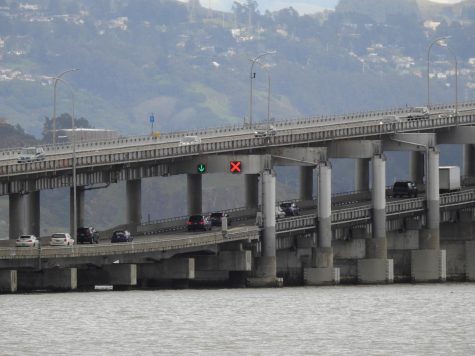
On the lower deck, the third lane is opened and closed throughout the day so as to alleviate traffic during peak hours.
“Our residents were concerned because many use the bridge and many were stuck in the situation. There was some massive traffic that was going on … [and] we’re hearing loud and clear from employers and employees that [it’s] very difficult to be stuck in that kind of traffic,” Connolly said. “There’s an interest to keep our community abreast of what’s happening so I think it’s been important to stay out there providing information.”
Although safety measures are being taken, Bowes said that she still does not fully trust the bridge after hearing about the falling concrete, and even admitted that she would have a tough time not thinking about it when crossing the bridge.
“If I was driving from Oakland to Marin, I wouldn’t think about it at all but if I was driving from Marin to Oakland I would think about it a little because it was the second level that [had] the things that were falling. I would definitely be cautious of it,” Bowes said.
Although Caltrans planned to take immediate action to address the bridge, construction was delayed until Feb. 19 due to rainy weather, almost two weeks after the incident. More recently, construction was again halted on Mar. 6 as another storm hit the North Bay. However, according to Fremier these delays are both acceptable and necessary, as he said that the joint failure is not a widespread problem throughout the bridge and working in the rain would have presented a number of challenges.
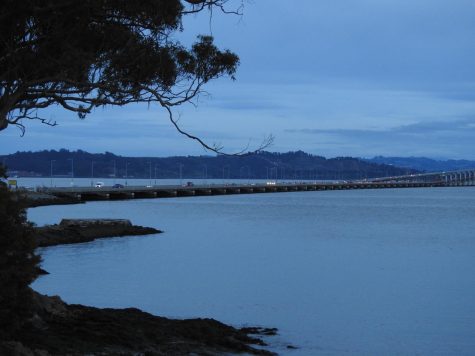
While the Marin side of the bridge remains structurally sound, the area near the tool both on the other side of the bridge has recently experienced some instability.
“Even though the work is done at night, you need to put in a lane closure in order to do the construction and the general practice is not to do lane closures in rainy weather because of the traffic hazards,” Fremier said. “Secondarily … it’s hard to pour concrete in rainy weather because it interferes with it setting. And the third component is I would say it’s not that critical to get the joint work done in any particular order because there’s no evidence that the problem that happened is systemic to the other joints.”
Though both the county and Caltrans will work to ensure the structural stability of the 60-year-old bridge, there is a growing awareness that due to its age, it may soon have to be replaced. According to Connolly, officials have already started a dialogue and a change could occur in as little as 20 years.
“There’s a recognition that this is an old bridge, and at the time, it was built up to standards that actually would not be the standards that we have today,” Connolly said. “At some point in the future this bridge will need to be replaced and there are already discussions along those lines.”








